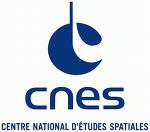Towards an understanding
of the phenomenon ?
The understanding of the phenomenon remains an extremely active field
of research. However, the latest observations lead to a global vision
of the mechanisms.
In most of the scenarios currently considered, the
progenitor is a black hole recently formed, surrounded by an accretion
disk. This black hole can result from the collapse of a very massive
star in fast rotation (hypernova model) or from the collapse of two
neutron stars (merger model). The matter is ejected in both cases with
an ultra relativistic speed (Lorentz factor larger than 100) in a cone
whose opening is of a few degrees, the observer being placed by chance
in a direction included in this cone. Various matter shells are ejected
with different speeds. When a shell meets another one, there is an
internal shock. The electrons accelerated by this shock radiate,
probably by synchrotron radiation in the existing magnetic fields, and
produce gamma rays (emission which has given the name to the
phenomenon), but also X rays and visible light (prompt emission).
Several internal shocks can take place, which accounts for the
complexity and the variety of the GRB phenomenon. Finally the shells
collide with the surrounding matter, which can be the interstellar
environment or the material expelled previously by the progenitor. A
radiation, probably due to the synchrotron emission, is then produced,
covering all the electromagnetic spectrum from X rays to the radio
waves (afterglow emission).

These scenarios have been confirmed by several
observations:
- In several cases, long GRBS have been firmly
associated to type Ib/Ic supernova (GRB980425/SN1998bw,
GRB030329/SN2003df, ?). In several other cases, the study of the light
curves has shown a rebrightening after a few days, which is also
compatible with the appearance of a supernova. The long GRBs seem to be
linked to the most massive stars.
- the short GRBs have been observed in galaxies
with a weak star formation activity. They appear to be linked to the
coalescence of two neutron stars.
Very promising
cosmological applications
The GRB observations in the visible domain have opened very recently a
new window on our Universe. This breakthrough is due to the extreme
luminosity of the phenomenon, which makes it an extremely powerful
probe of the Universe at very high redshift. The most distant GRB ever
observed until now, GRB080913, has a redshift of 6.7, which corresponds
approximately to the most distant quasars.

This property makes the GRBs exceptional beacons
to study the early Universe. In particular, they offer a unique
possibility to study the epoch of the first stars formation and of the
reionisation of the Universe, the so-called Dark Ages. By definition,
there were no quasars at these epochs since it takes several hundred
million of years to build a supermassive black hole. The first stars,
however, are expected to be supermassive (100 times solar masses or
more) and a fraction of these are expected to produce detectable GRBs.
Furthermore, GRBs can be used as probes of
cosmological lines-of-sight in a manner similar to that of bright
quasars. Indeed, when looking for absorption systems in the spectrum of
distant quasars or GRBs, we select galaxies with no luminosity (or star
formation) bias. Absorbers are thus complementary to galaxies selected
in emission (e.g. Lyman break galaxies). While quasars, which are
bright and do not fade away, will remain important probes of the weak
lines of the Ly? forest at redshifts 2 < z < 5, the
advantage of GRBs over quasars is that they will allow the study of the
more rare high column density absorption systems such as the Damped Ly?
absorbers, the metal systems (MgII, CIV, ?) or specifically interesting
species (D, H2 , C*, CII, ?).
Their advantages as background sources are many
fold. First, it will allow to probe galaxies selected thanks to their
metal absorption up to the highest redshifts where there might be no
other observational techniques to find faint bound objects. At
intermediate redshifts, the link between galaxies and CIV in particular
has clearly been established. Assuming this also holds at higher
redshifts (z>7), CIV could then be used as tracers of the very
first galaxies of the Universe. Second, GRB being bright and transient
background sources, they will be the ideal tool to observe extreme
environments in absorbers. Whilst many high column density system have
been found at the GRB position, including extremely high N(HI), the
first truly intervening Damped Ly? system has only been recently
discovered (GRB 050730). It is expected that large N(HI) and/or dusty
systems missing from current quasar absorbers survey (because of the
dust extinguishing the quasar) will be probed with GRBs thanks to their
extremely high intrinsic luminosity. Third, the central question of the
relation of all these absorbers to galaxies remains. Indeed, the
steadily bright quasars make it extremely difficult to search for the
galaxy counterparts to the intervening absorbers. In GRBs, the
afterglows will disappear and the search for emission from the
absorbing galaxy will only be affected by the light from the much
fainter GRB host galaxy. Absorbers detected towards GRBs will therefore
be the perfect tool to bridge systems detected in absorption with
galaxies detected in emission.
Moreover the GRBs host-galaxies themselves
describe a sample of galaxies selected in a new way (GRB-selected),
spanning the whole history of the universe. The interpretation of their
properties in the global cosmic and galactic evolution framework will
be possible once the nature of GRBs and their host is better
understood.
Due to the link between the long GRBs and the
massive stars, it has been also considered that they may provide a
unique opportunity to trace the star formation process in the early
Universe. However infrared observations with the Spitzer satellite have
shown very recently that the host galaxies are not a good tracer of the
stellar formation history as their properties seem to be not correlated
with the stellar formation of nearby and distant galaxies. This
application may be, at the end, not so straightforward.

By using the characteristics of the gamma ray
spectrum and of the optical light curve, it may be possible to
standardize the GRBs luminosity, as it has been already done with type
Ia supernovae. This method, which is still the object of a very intense
debate, could offer remarkable potentialities by allowing the
measurement of the cosmological parameters up to redshifts of 10-15,
against <2 for type Ia supernovae. Systematic errors are in
addition different between these two methods, which make them perfectly
complementary.
|
 The SVOM French Web Site
The SVOM French Web Site










